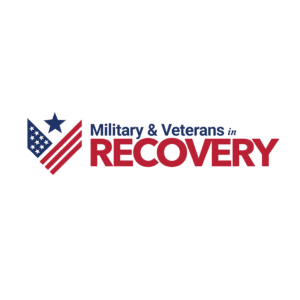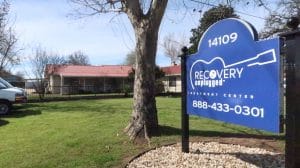Oklahoma Drug Rehabs


Ambrosia Treatment Center – Oklahoma
Duncan , OK

Newport Academy – Teen Treatment Center
Dallas , TX

Symetria Recovery – Fort Worth
Fort Worth , TX

Military & Veterans in Recovery – Banyan Treatment
,


Lakeland Behavioral Health System
Springfield , MO

Oklahoma Drug Abuse
Marijuana is cited as the most abused substance among Oklahomans, but other drugs also contribute to the state’s drug abuse rates. Roughly 4.85 percent of Oklahoma residents reported using an illicit drug other than marijuana in one month prior to a 2008 study. The reported national average from the same study was 3.58 percent.
The number of drug-induced deaths in Oklahoma exceeds the United State’s average rate.
Plenty of Oklahomans turn to rehab to treat a variety of substance abuse disorders, but residents mostly suffer from an addiction to the following drugs:
Methamphetamine is one of the most significant drug-related threats facing Oklahoma today. State law enforcement officers say that homegrown “one-pot” meth labs are especially problematic in Oklahoma’s rural communities. Other sources of the state’s meth supply come from drug trafficking organizations (DTOs) who smuggle it from Mexico and the nation’s southwest region.
Prescription drug abuse is another one of Oklahoma’s fastest growing problems. Of the nearly 3,200 unintentional fatal overdoses that occurred from 2007 to 2011, 81 percent involved at least one type of prescription drug. Opioid painkillers are now the most common type of drug involved in overdose deaths, including oxycodone, alprazolam and hydrocodone. In 2011, more overdose deaths involved hydrocodone than meth, heroin and cocaine combined.
Oklahoma is one of many states in the U.S. fighting a drug epidemic. But fighting a substance addiction can be a battle of its own. An addiction has the power to make a person feel hopeless because they’re unable to stop their cycle of abuse.
The right kind of treatment can end your war with addiction. Contact a treatment provider now to discover available treatment options.

Break free from addiction.
You have options. Talk about them with a treatment provider today.
Laws Of Oklahoma Drug Use
The Sooner State is known for having some of the toughest drug laws in the country. Nearly 17,000 people are arrested for drug offenses every year in Oklahoma, including the possession, sale and manufacturing of any type of illegal drug.
Oklahoma imposes extremely harsh penalties for drug offenses that can result in expensive fines, long jail sentences or a combination of both.
Oklahoma categorizes illegal substances into separate schedules – schedules I, II, III, IV and V. Schedules I and II include drugs with the highest potential for abuse and little to no accepted medical use. In contrast, substances in schedules III through V include drugs with less risk for dependency and greater use in a medical setting.
While there’s a vast number of substances classified in each schedule, below are a few examples of the most common drugs for each:
- Schedule I: Heroin
- Schedule II: Morphine, cocaine and methamphetamine
- Schedule III: Anabolic steroids
- Schedule IV: Klonopin, Ativan
- Schedule V: Medications containing certain percentages of codeine, opium, pseudoephedrine and others
| Drug Schedule | Number of offenses | Maximum jail/prison time | Maximum fine |
|---|---|---|---|
| Possession | |||
| Schedules I and II | First offense | 5 years | $5,000 |
| Subsequent offense | 20 years | $10,000 | |
| Schedules III, IV and V | First offense | 1 year | $1,000 |
| Subsequent offense | 10 years | $5,000 | |
| Sale | |||
| Specific schedule I and II drugs | First and subsequent offenses | Life (5 years minimum) | $100,000 |
| Other schedule I, II, III and IV drugs | First and subsequent offenses | Life (2 years minimum) | $20,000 |
| Schedule V | First and subsequent offenses | 5 years | $1,000 |
Marijuana is strictly illegal in Oklahoma. Because it’s classified as a schedule I drug under Oklahoma law, the penalties can be just as harsh as other schedule I offenses. Regardless of how much you’re caught with, marijuana possession can send you to jail for a full year upon your first offense.
In April 2016, the governor of Oklahoma signed HB 2479, which cut the sentences for a second marijuana possession offense in half. The previous penalty for a second offense was a 10-year prison sentence. Effective November 2016, all maximum sentences will be reduced to five years.
Medical marijuana legislation is very limited in Oklahoma. Only cannabidiol (CBD), a low-THC oil derived from the cannabis plant, is allowed for the treatment of pediatric epilepsy. The oil may not contain any more than three-tenths of one percent of THC.
Addiction Treatment Laws In Oklahoma
A crucial first step in addressing Oklahoma’s multiple drug abuse issues is to raise public awareness about the threat they pose to communities. Oklahoma has taken major strides in reducing the dangerous impact of drug abuse through action-oriented tactics.
The state introduced a comprehensive drug abuse prevention plan in 2013. Some of the tactics include:
- Working with local media and news channels on the epidemic of drug overdose deaths.
- Conducting town hall meetings to educate communities and school groups.
- Promoting policies in hospital emergency departments and clinics to discourage people from doctor shopping (visiting doctor after doctor to get more drug prescriptions).
- Advocating for the expansion of community-based services for substance abuse treatment and recovery.
Facing a substance abuse epidemic in a community can’t be done using a “set-it-and-forget-it” approach. It involves constantly working toward raising awareness and educating communities to ensure the safety and welfare of everyone involved.
Oklahoma Methamphetamine Offender Registration Act
Oklahoma’s communities struggle with the negative impacts of a huge methamphetamine problem. The drug’s high prevalence is largely caused by one-time meth offenders, who think they can get away with possessing, producing and distributing the drug again.
The Oklahoma Methamphetamine Offender Registration Act was enacted to keep track of meth offenders and stop them from reoffending.
When a person is convicted of any meth-related crime in Oklahoma, he or she must register as a meth offender and is not allowed to purchase or possess pseudoephedrine. Pseudoephedrine, a common over-the-counter decongestant medication, is a main ingredient used to cook meth.
Prior to the act, Oklahoma already had a pseudoephedrine monitoring program in place to limit the amount of the drug that can be purchased. Under state law, the daily purchase limit of pseudoephedrine is 3.6 grams and the monthly limit is 7.2 grams.
By limiting the availability of the legal drugs used to produce meth, as well as the people who can access them, Oklahoma hopes to reduce meth’s presence – as well as instances of abuse and addiction – in its communities.
Oklahoma’s “Safe Trips for Scripts” Program
It’s common to have leftover pill medications after taking them for a prescribed medical condition. Many people are unsure of what to do with the extra pills, so they simply store them in their medicine cabinet. However, others can easily find the pills and consume, sell or trade them.
In an effort to keep prescription medications from being abused or sold into the illegal drug market, Oklahoma established a prescription drop-off box program. The boxes, as part of the state’s “Safe Trips for Scripts” program, provide permanent drop-off locations for people to safely dispose of unused prescription pills.
Prescription drop-off boxes, like the ones in Oklahoma, have been proven to significantly reduce the number of unused pills that reach the streets.
In addition to prescription pills, expired cold medicines and over-the-counter pain relievers are accepted. Oklahoma’s drop-off boxes do not allow any type of liquid medications, needles, glass items or inhalers.
Treatment Centers In Oklahoma
Oklahoma’s Support for Treatment and Recovery Services (STARS) Division is responsible for overseeing the quality and effectiveness of substance abuse treatment in the state. The division embraces a “recovery is a reality” approach to addiction treatment, with specialized services for each of Oklahoma’s populations, including women and children, teens and inmates.
Each person who begins the treatment process in Oklahoma starts with a personalized assessment that helps design their individual recovery path. Treatment and therapy approaches can include medical detox, residential inpatient treatment, outpatient counseling, substance abuse education, transitional halfway housing and aftercare recovery support.
After making the decision to get help for an addiction, the next step is deciding where to go. While there are plenty of effective options to choose from in Oklahoma, the exact treatment you desire may be located in another state.
Taking the time to explore all treatment options greatly increases your chances of staying sober after rehab.
Some people believe that the only way they can truly recover from their addiction is by traveling to another state – or even another part of the country – for rehab. Traveling for rehab has been shown to be very beneficial for a person’s recovery. When you’re far away from where your addiction took place, you’re more able to put those triggers and toxic habits behind you.
There is help available. Contact a treatment provider today.
Published:
Author
Jeffrey Juergens

-
Jeffrey Juergens earned his Bachelor’s and Juris Doctor from the University of Florida. Jeffrey’s desire to help others led him to focus on economic and social development and policy making. After graduation, he decided to pursue his passion of writing and editing. Jeffrey’s mission is to educate and inform the public on addiction issues and help those in need of treatment find the best option for them.
- More from Jeffrey Juergens
- Alabama
- Alaska
- Arizona
- Arkansas
- California
- Colorado
- Connecticut
- Delaware
- Florida
- Georgia
- Hawaii
- Idaho
- Illinois
- Indiana
- Iowa
- Kansas
- Kentucky
- Louisiana
- Maine
- Maryland
- Massachusetts
- Michigan
- Minnesota
- Mississippi
- Missouri
- Montana
- Nebraska
- Nevada
- New Hampshire
- New Jersey
- New Mexico
- New York
- North Carolina
- North Dakota
- Ohio
- Oklahoma
- Oregon
- Pennsylvania
- Rhode Island
- South Carolina
- South Dakota
- Tennessee
- Texas
- Utah
- Vermont
- Virginia
- Washington
- West Virginia
- Wisconsin
- Wyoming
- Guam
- Puerto Rico
- US Pacific Islands
- US Virgin Islands
- Washington D.C.
- American Samoa
Sources
Cities in Oklahoma
Feature your center
Ready to connect with treatment seekers across the country? Enter your information to learn about our advertising options and get in contact with our development team.



